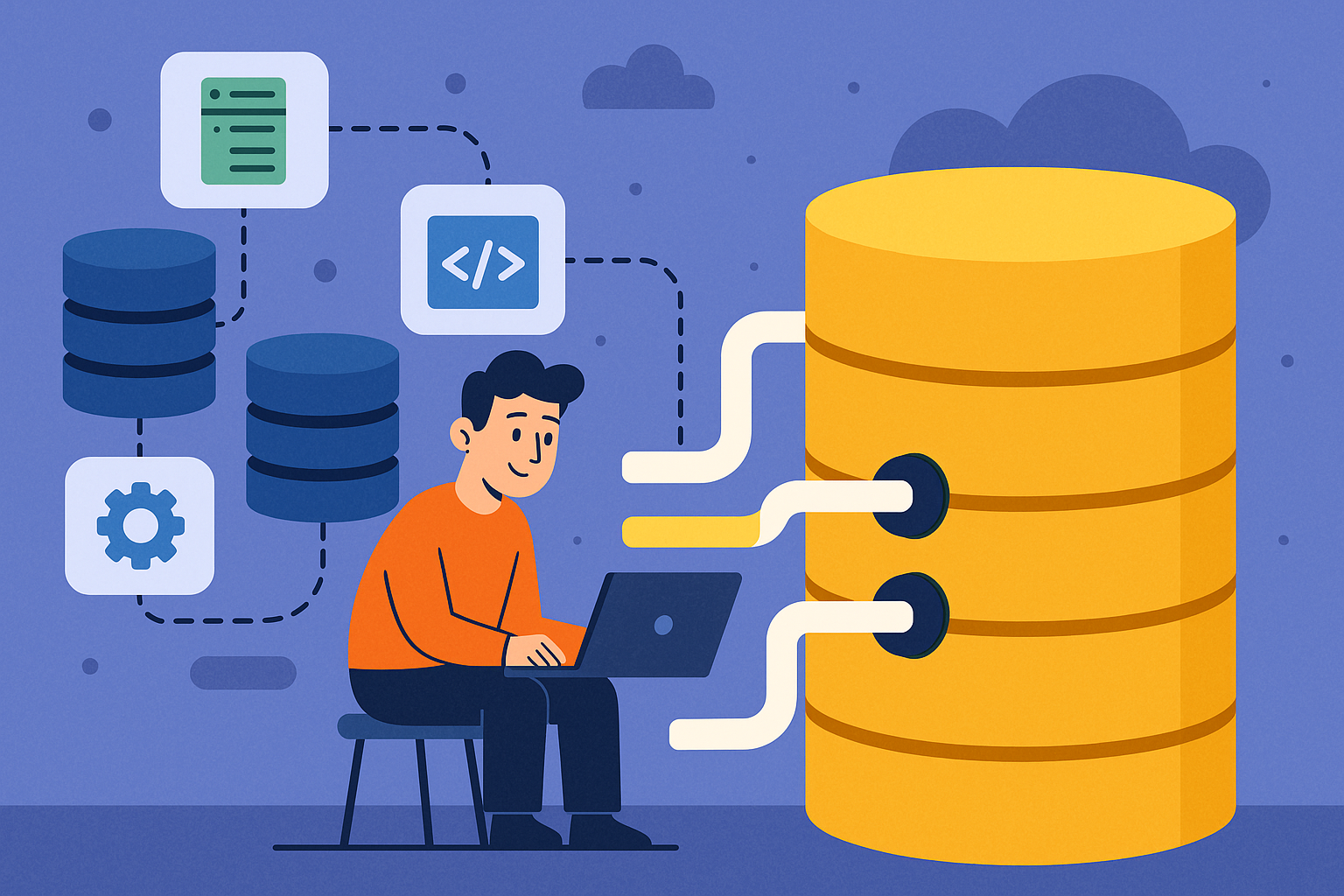Navigating the Sea of Data with ELT
In a digital economy, where data serves as both the compass and the map, it's vital to understand the mechanics that govern its flow, storage, and transformation. Data is indeed likened to 'the new oil,' but like crude oil, its real value is unlocked only when it's refined and made usable. The techniques employed to manage this precious resource have evolved with technology, and the ELT (Extract, Load, Transform) paradigm has rapidly gained prominence in this changing landscape. As organizations pivot towards cloud-based solutions and real-time analytics, the ELT approach offers a streamlined, efficient, and more scalable method for data integration, especially when compared to its predecessor, ETL (Extract, Transform, Load).
Emerging as the preferred methodology for modern, cloud-centric data architectures, ELT is not just an iteration of previous techniques but a transformative approach that accommodates the complexities of contemporary data environments. The speed at which business decisions need to be made today is rapidly decreasing; thus, the agility offered by ELT is no longer just a luxury but a necessity. So, how did we get here, what does the current landscape look like, and where are we headed? This comprehensive exploration aims to answer these questions, delving into the nuances of ELT and its indispensable role in modern data architecture.
The Evolution of Data Integration Techniques
In the early days of data warehousing, ETL (Extract, Transform, Load) reigned supreme. This method was particularly advantageous in an era when computational resources were not only limited but also expensive. In this environment, performing transformations before loading data into a warehouse made sense—minimize the computational burden on the warehouse and maximize the utility of the extracted data. However, this approach had its drawbacks. The ETL process was often resource-intensive, requiring dedicated transformation engines and additional storage to hold the transformed data. As data volumes grew, so did the complexity and latency associated with ETL, leading to bottlenecks.
In stark contrast to this stands today's landscape, characterized by distributed computing, virtually unlimited storage, and powerful cloud-based solutions. With cloud-native data warehouses, the constraints that initially made ETL sensible are becoming less relevant. They are replaced by an architecture that enables high-speed, parallel processing capabilities and dynamic resource allocation. This paradigm shift has fueled the move from ETL to ELT, reflecting the changing equations of data integration techniques against the backdrop of advanced computing and storage solutions.
The Current State of Data Architecture
We live in a world marked by the explosion of data from diverse sources—IoT devices, user interactions on digital platforms, business transactions, and more. These developments have necessitated significant changes in data architecture. For instance, the advent of big data introduced the need to process and store data of varying structures and types, from structured tables to semi-structured JSON files and unstructured text. The real-time nature of modern analytics and decision-making has also posed new challenges. Traditional batch processing methods are giving way to real-time and near-real-time data processing architectures to meet these demands.
Moreover, the democratization of machine learning and artificial intelligence has led to scenarios where data isn't just ingested and reported upon but is actively used to train models that, in turn, feed back into business processes. Consequently, data architecture is not merely a static framework but a dynamic ecosystem. Modern data architectures are designed to be flexible, scalable, and capable of supporting both complex queries and advanced analytics applications.
Why ELT Over ETL?
ELT offers several advantages over traditional ETL methods. First, by shifting the transformation step to the end and utilizing the computational power of modern, cloud-based data warehouses, ELT significantly reduces data processing time. This makes the architecture much more scalable, particularly for businesses experiencing data growth. Second, ELT is often more cost-effective, as cloud-based data warehouses are designed for high-speed data processing, reducing the need for additional computing resources.
The Architectural Paradigm: ELT's Fit in Modern Data Warehousing
Modern data warehouses are designed with cloud-native architecture principles that prioritize scalability, performance, and flexibility. Architectures such as Snowflake's multi-cluster, shared data architecture or Amazon Redshift's columnar data storage and massively parallel processing (MPP) design are game-changers. These allow data to be loaded and transformed at unprecedented speeds, making ELT a natural fit.
In an ELT process, data is extracted from various source systems and loaded into the data warehouse without any transformations. Once loaded, the heavy lifting of transformations occurs within the warehouse, leveraging its computational power. This approach aligns with the capabilities of modern data warehouses, which are optimized for fast query performance through techniques such as automated data distribution and in-memory processing.
Jacek Laskowski, an expert in data engineering, captures the essence of this fit well: "In the modern era of data warehousing, ELT proves to be a perfect fit due to its cloud-native and parallel processing capabilities." It's a symbiotic relationship—ELT leverages the robustness of modern data warehouses, and these warehouses, in turn, are designed to perform at their best when fed data through ELT pipelines.
By drilling deeper into the evolution of data integration techniques, the currents shaping modern data architecture, and how ELT fits into this, we can better appreciate why ELT is not just an alternative but an evolved solution better aligned with today's data challenges and opportunities.
The Technical Details: Extract, Load, Transform
In ELT, the Extract phase involves pulling raw data from multiple, often heterogeneous, sources like NoSQL databases, SaaS platforms, or even streamed in real-time. During the Load phase, this raw data is loaded directly into the data warehouse. Since modern data warehouses are designed to handle massive volumes of data, this process is quick and efficient. Finally, the Transform phase happens within the data warehouse itself. Whether the data needs to be aggregated, enriched, or otherwise manipulated, the data warehouse's powerful computing capabilities perform these transformations in-place, thereby speeding up the overall process.
Enhancing Real-Time Analytics with ELT
In industries like finance, healthcare, and IoT, real-time analytics can be a game-changer. The low latency that ELT offers is a significant advantage for applications requiring immediate insights. For example, in financial trading, even a few milliseconds of delay can result in substantial monetary losses. ELT accommodates such high-speed, low-latency requirements by transforming data almost instantaneously.
The Synergy of ELT and Data Governance
ELT also has implications for data governance. Modern data architectures often come with built-in data governance tools, and the ELT process complements these by adding an extra layer of quality control. During the transformation phase within the data warehouse, automated checks can be put in place to ensure data integrity, consistency, and security. Metadata management and data lineage are easier to maintain, enhancing overall governance.
Security Implications in ELT
Data security remains a critical concern, and ELT processes are no exception. Security measures must be integrated throughout the ELT pipeline, from the initial extraction from external sources to loading and transforming within the data warehouse. Data encryption, both in transit and at rest, along with robust role-based access control and continuous auditing, are vital components of a secure ELT process.
Use Cases: Where ELT Shines
ELT has found applicability across a variety of sectors. In e-commerce, for instance, customer segmentation and real-time recommendation engines rely on the quick transformation of vast datasets. Similarly, in manufacturing, ELT-driven analytics can facilitate predictive maintenance, thereby minimizing downtime and maximizing efficiency.
Beyond Warehouses: ELT and Data Lakes, Data Mesh
While ELT is most commonly associated with data warehouses, its utility extends to more complex and less structured data ecosystems like data lakes and the emerging concept of data mesh. Data lakes, which store raw data in a more unfiltered state, can benefit from ELT as initial structuring and transformation of this data can occur when it is moved to analytical platforms. In a data mesh architecture, ELT processes can be decentralized, allowing different departments or units within an organization to perform their transformations independently yet cohesively.
The Intersection of ELT and Machine Learning
Machine learning projects often require significant data cleaning and preparation, and ELT can streamline this otherwise cumbersome process. The transformed, clean data is readily available for machine learning algorithms, thereby shortening the time from data ingestion to actionable insights.
API and iPaaS: Integrating ELT into your Digital Ecosystem
In the dynamic world of data, ELT is not an island. It's embedded within a vast sea of tools, platforms, and services. At the nexus of this integration is the powerful combination of APIs and iPaaS (Integration Platform as a Service).
APIs form the veins of modern digital architectures, carrying data to and from various systems. They make it possible for different tools and platforms to "talk" to each other, and this interoperability is vital for the seamless functioning of ELT processes.
But as businesses scale, managing these multiple integrations can become challenging. This is where iPaaS comes in. Gartner's Massimo Pezzini often emphasizes the importance of iPaaS in "providing a unified approach to integration, ensuring that every element of your digital ecosystem communicates effectively." iPaaS not only simplifies the integration process but also ensures that data flows smoothly, efficiently, and securely between systems.
In essence, while ELT provides the methodology for handling, transforming, and storing data, APIs and iPaaS ensure that this data is always in the right place at the right time.
Deciding on ELT: Cost and ROI Considerations
Transitioning to an ELT-based architecture is not just a matter of technical implementation; it's a strategic business decision. The costs involved in moving from ETL to ELT can be substantial, but they need to be weighed against the long-term ROI, which often manifests as increased operational efficiency and more agile data analytics capabilities.
Challenges and Best Practices
Like any technology, ELT comes with its set of challenges, such as ensuring data consistency across various transformations. Version control for transformation logic and real-time monitoring of data lineage are best practices that can mitigate these issues.
ELT as the Beacon in Tomorrow's Data Landscape
As our exploration of ELT within modern data architecture comes to an end, it's clear that ELT will continue to be at the forefront of technological innovation in data processing. With technologies like edge computing and quantum computing gradually becoming a part of our digital vocabulary, it's plausible that ELT methodologies could see further refinements, staying ahead in the race for agile and efficient data processing.
The transition from ETL to ELT is emblematic of a broader shift in data strategy—a move towards more real-time, scalable, and flexible solutions that empower organizations to be more data-driven. It serves as a critical building block in an organization's data strategy, enabling more fluid data pipelines, efficient analytics, and thus, more informed decision-making.
As businesses continue to grapple with an ever-increasing volume of data, and as the technology to manage it continues to evolve, ELT stands as a navigational star guiding us towards a more agile and data-empowered future. With its role in modern data warehousing, its implications for real-time analytics, its harmonious relationship with data governance, and its increasing relevance in machine learning contexts, ELT is not merely a set of operations but an integral part of a strategic vision for the future of data management.
This is more than technological evolution; it's a data revolution, and ELT sits at its core, promising a path to a more dynamic and insightful tomorrow.
 is now
is now


